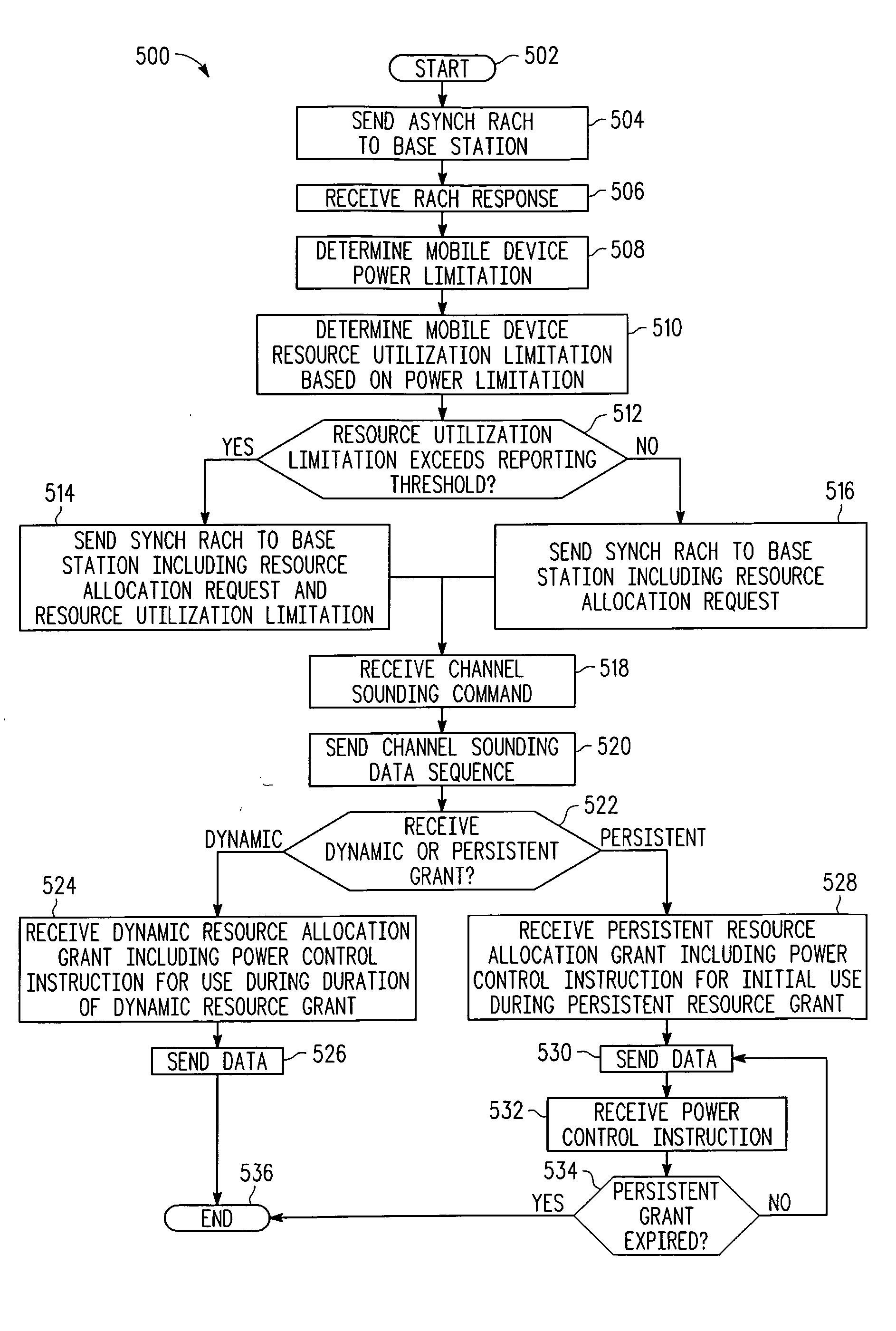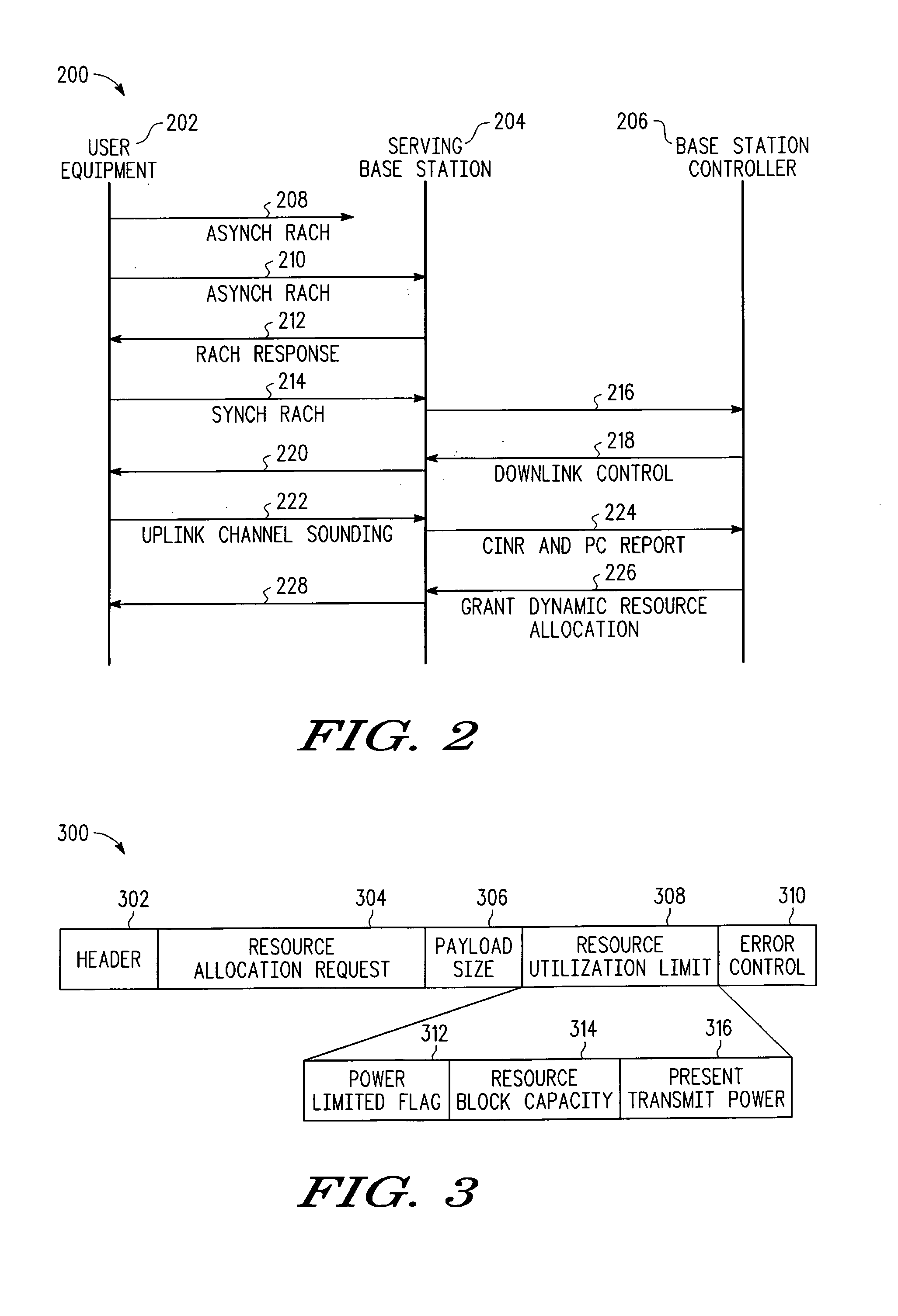Resource allocation in a communication system
a communication system and resource allocation technology, applied in power management, electrical equipment, radio transmission, etc., can solve the problems of shadowing, path loss, and loss of receiving signal power,
- Summary
- Abstract
- Description
- Claims
- Application Information
AI Technical Summary
Problems solved by technology
Method used
Image
Examples
Embodiment Construction
[0015]FIG. 1 is a high-level diagram of portions of a communication system 100 in accordance with one or more embodiments. Communication system 100 can be a wireless communication system or other similar communication system that uses power control techniques and algorithms to control a transmit power of one or more devices transmitting data. As illustrated, FIG. 1 includes base stations 102 and 104 and mobile devices 106 and 108, which mobile devices can also be referred to as mobile stations, subscriber units, mobile terminals, or user equipment (UE). Base station 102 generally communicates wirelessly with mobile devices in cell 110, while base station 104 generally communicates wirelessly with mobile devices in cell 112. Base station controller 114 (which in some embodiments can be referred to as an eNode-B or an evolved node-B) is coupled to base station 102, and perhaps other base stations 116, in order to control the operation of base station 102 and other base stations. In va...
PUM
 Login to View More
Login to View More Abstract
Description
Claims
Application Information
 Login to View More
Login to View More - R&D
- Intellectual Property
- Life Sciences
- Materials
- Tech Scout
- Unparalleled Data Quality
- Higher Quality Content
- 60% Fewer Hallucinations
Browse by: Latest US Patents, China's latest patents, Technical Efficacy Thesaurus, Application Domain, Technology Topic, Popular Technical Reports.
© 2025 PatSnap. All rights reserved.Legal|Privacy policy|Modern Slavery Act Transparency Statement|Sitemap|About US| Contact US: help@patsnap.com



